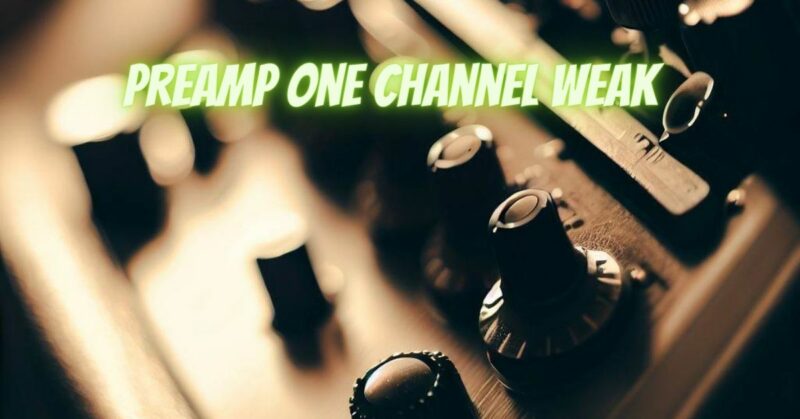Experiencing a weaker audio output in one channel of your preamp can be frustrating, affecting the overall sound quality and balance of your audio system. Understanding the potential causes of this issue and implementing effective solutions is essential to restore the optimal performance of your preamp. In this article, we’ll explore the possible reasons behind a weak channel in your preamp and guide you through troubleshooting and resolving the problem.
Causes of One Channel Weakness:
- Cable Issues: Faulty or damaged cables, connectors, or plugs can result in reduced signal transmission, leading to a weaker audio output in one channel.
- Loose Connections: Loose connections within the preamp, such as solder joints or internal wiring, can cause signal loss and imbalances.
- Component Degradation: Over time, components like capacitors or resistors may degrade, leading to signal loss and reduced channel performance.
- Tube Degradation (Tube Preamps): If you’re using a tube preamp, the tubes may be nearing the end of their lifespan, causing one channel to become weaker.
- Switch or Selector Issues: If your preamp has input or output selectors, a faulty switch can lead to signal loss in one channel.
Troubleshooting and Solutions:
- Check Cables and Connections: Ensure all cables, connectors, and plugs are securely connected. Swap cables between channels to identify whether the issue is cable-related.
- Inspect Internal Wiring: If you’re comfortable, carefully open the preamp and inspect the internal wiring for loose connections, broken wires, or solder joints.
- Clean Contacts: Use contact cleaner to clean the input and output jacks, switches, and connectors. Dirty contacts can lead to signal loss.
- Component Inspection: If you have technical expertise, visually inspect the components for signs of degradation, such as bulging capacitors or burnt components.
- Tube Replacement (Tube Preamps): If you’re using a tube preamp and suspect tube degradation, consider replacing the tubes. Tubes have a limited lifespan and can affect audio quality as they age.
- Test Different Sources: Connect different audio sources to the preamp and check if the weak channel issue persists. This helps identify whether the issue is source-related.
- Swap Speakers: If applicable, swap the speakers between channels to determine if the issue is with the preamp or the speaker.
- Professional Inspection: If troubleshooting doesn’t resolve the issue, consider consulting a professional technician for a thorough diagnosis and repair.
Preventing Future Issues:
- Regular Maintenance: Perform regular checks on your preamp’s connections, cables, and components to catch issues early.
- Gentle Handling: Treat your preamp and its components with care to avoid physical damage that could lead to signal loss.
- Quality Cables: Invest in high-quality cables and connectors to ensure reliable signal transmission.
A weak channel in your preamp can be attributed to various factors, from cable issues to component degradation. Thoroughly inspect and troubleshoot the connections, cables, and components to identify and address the root cause. If you’re not comfortable with technical aspects, seeking professional help is recommended. Regular maintenance, careful handling, and quality components can help prevent future occurrences of channel weakness and maintain the integrity of your audio system’s performance.


